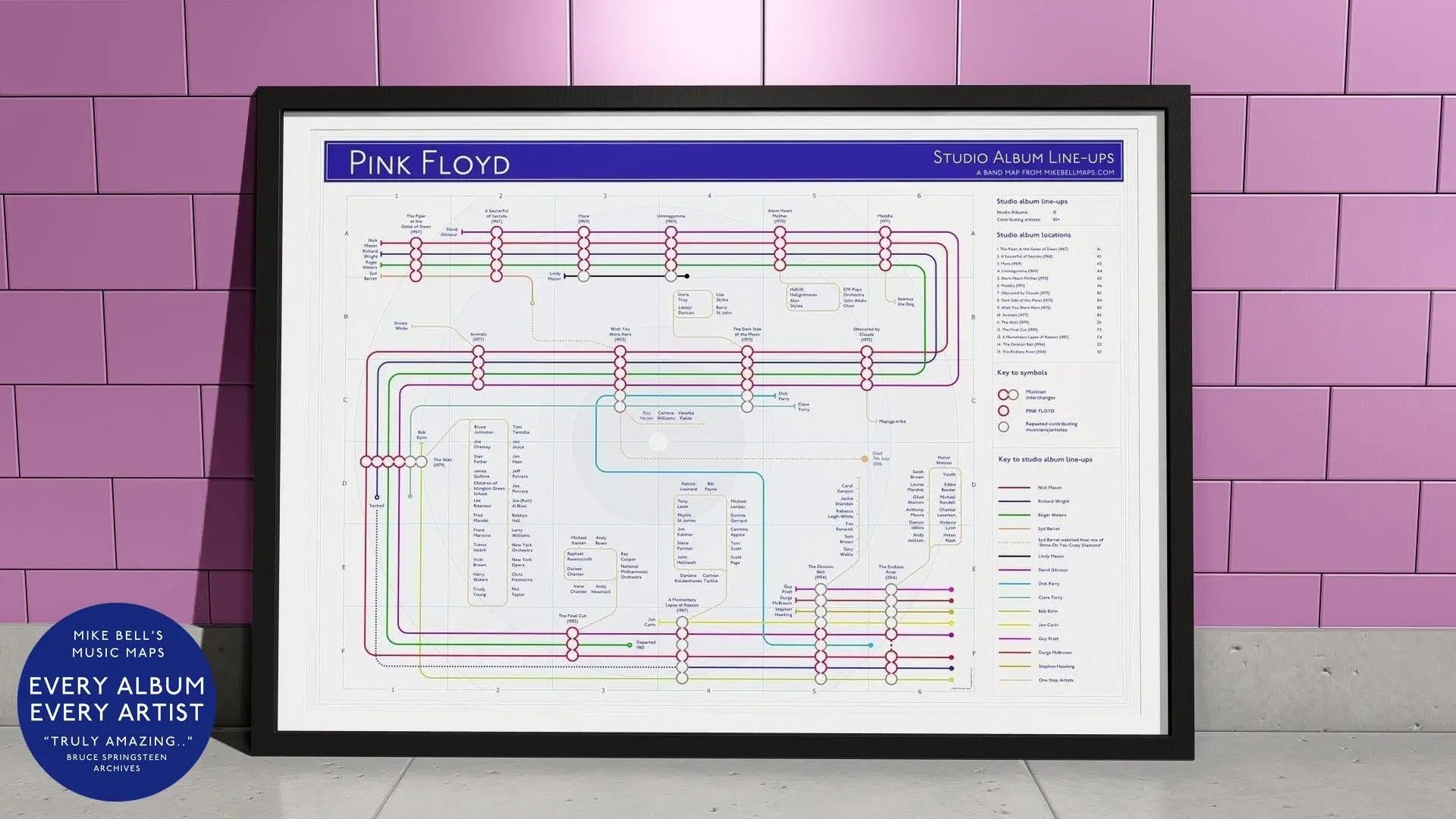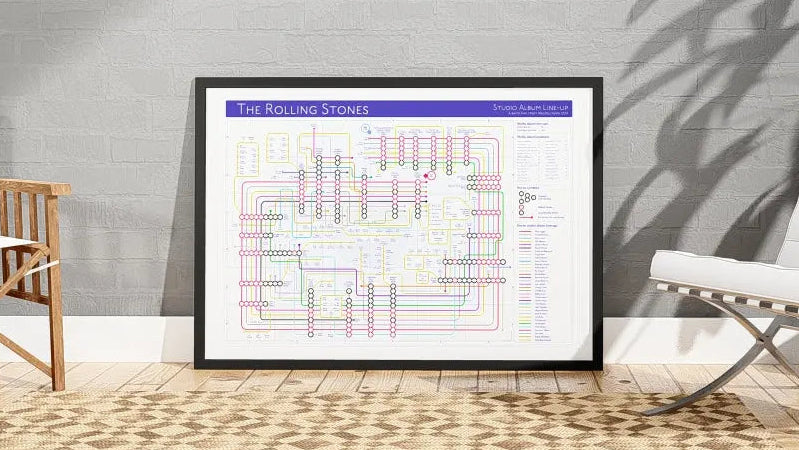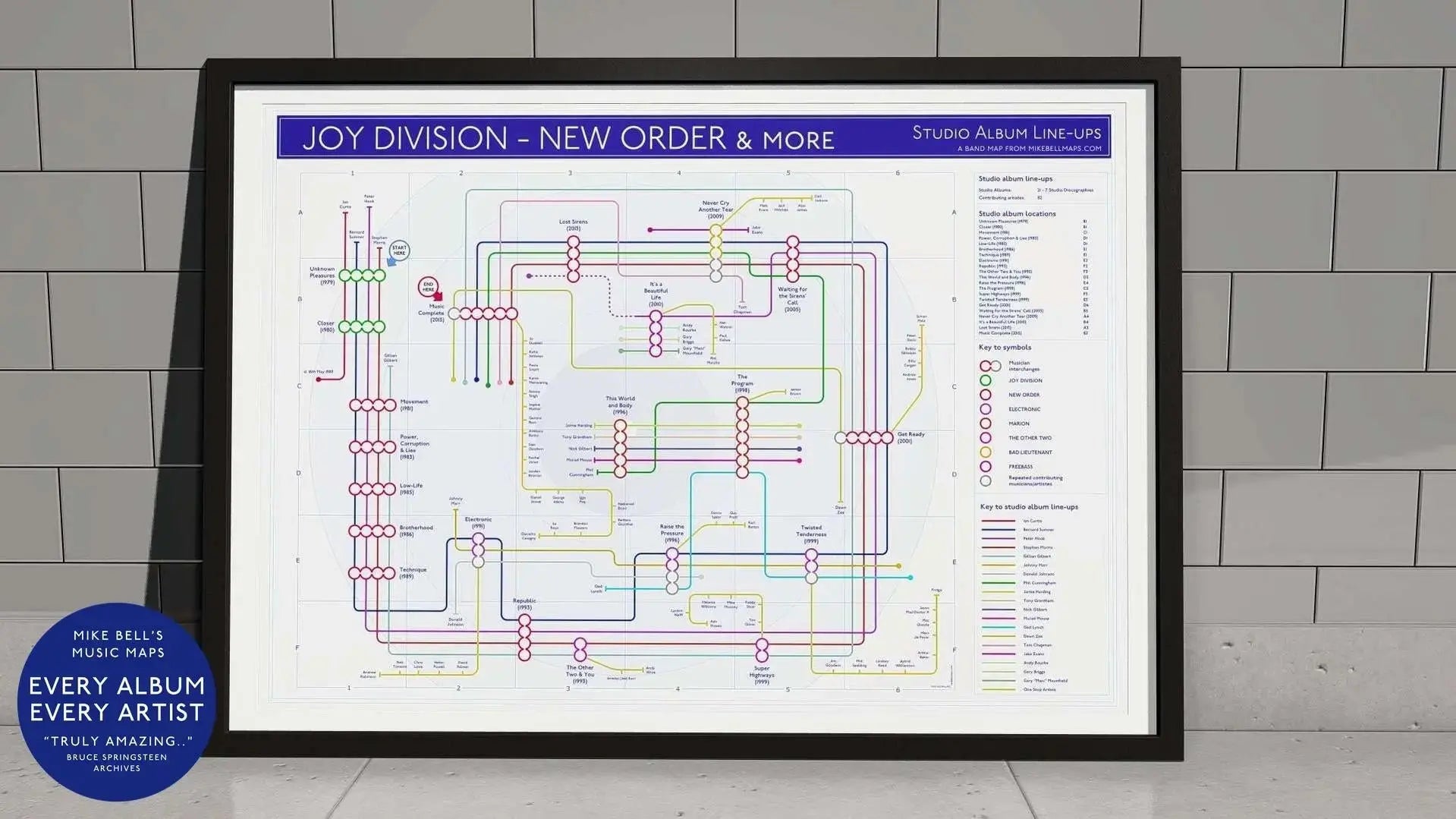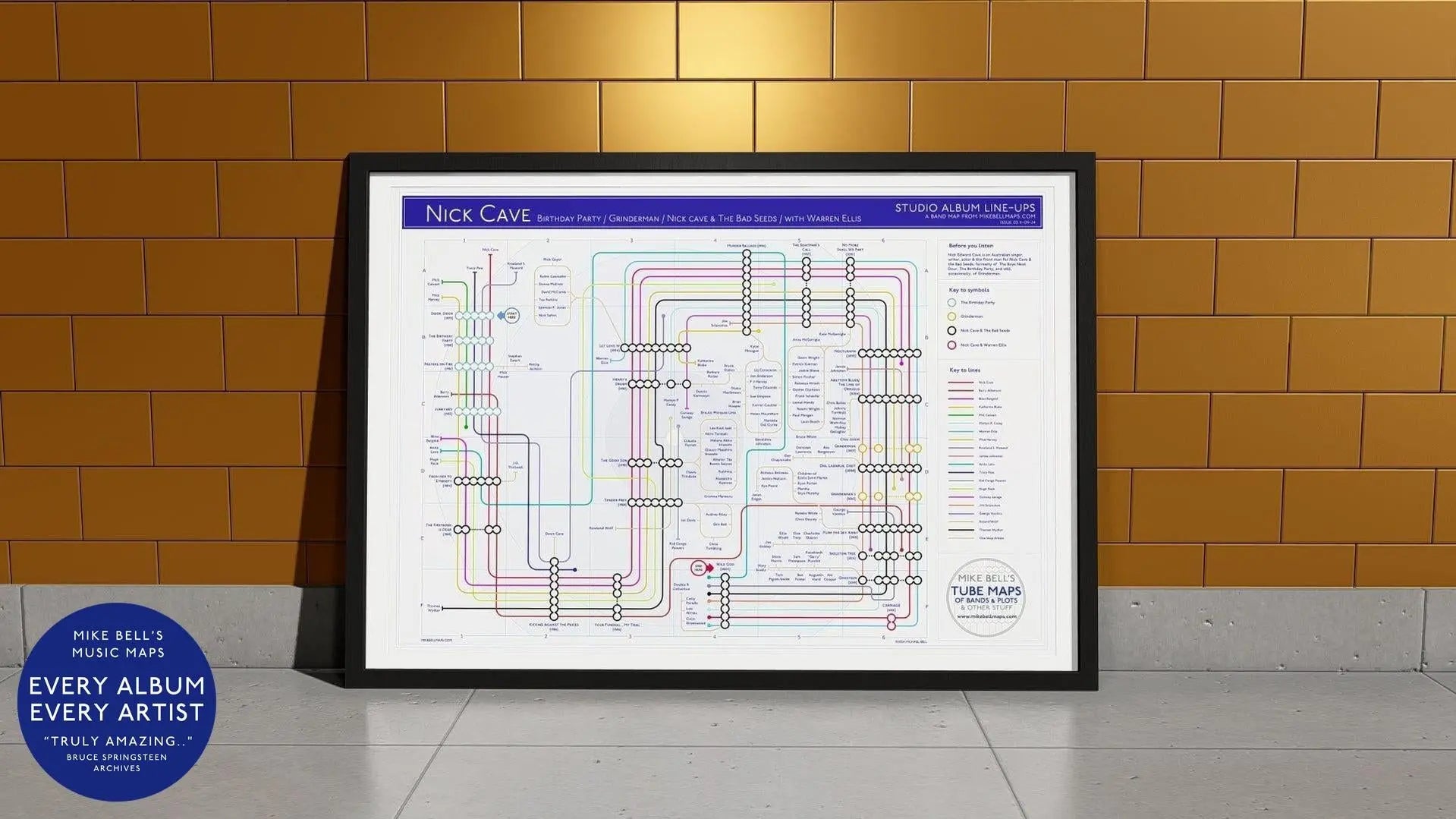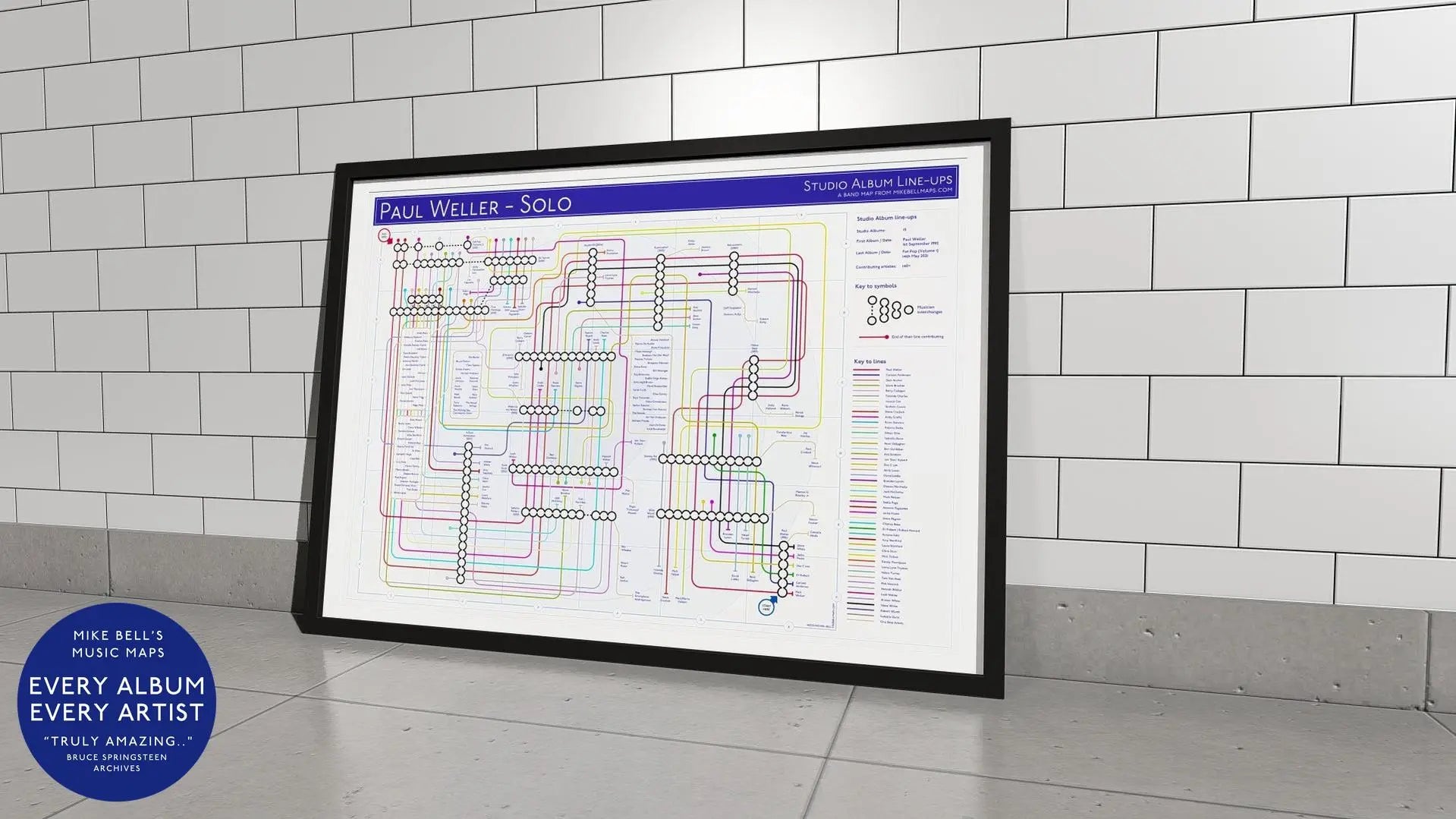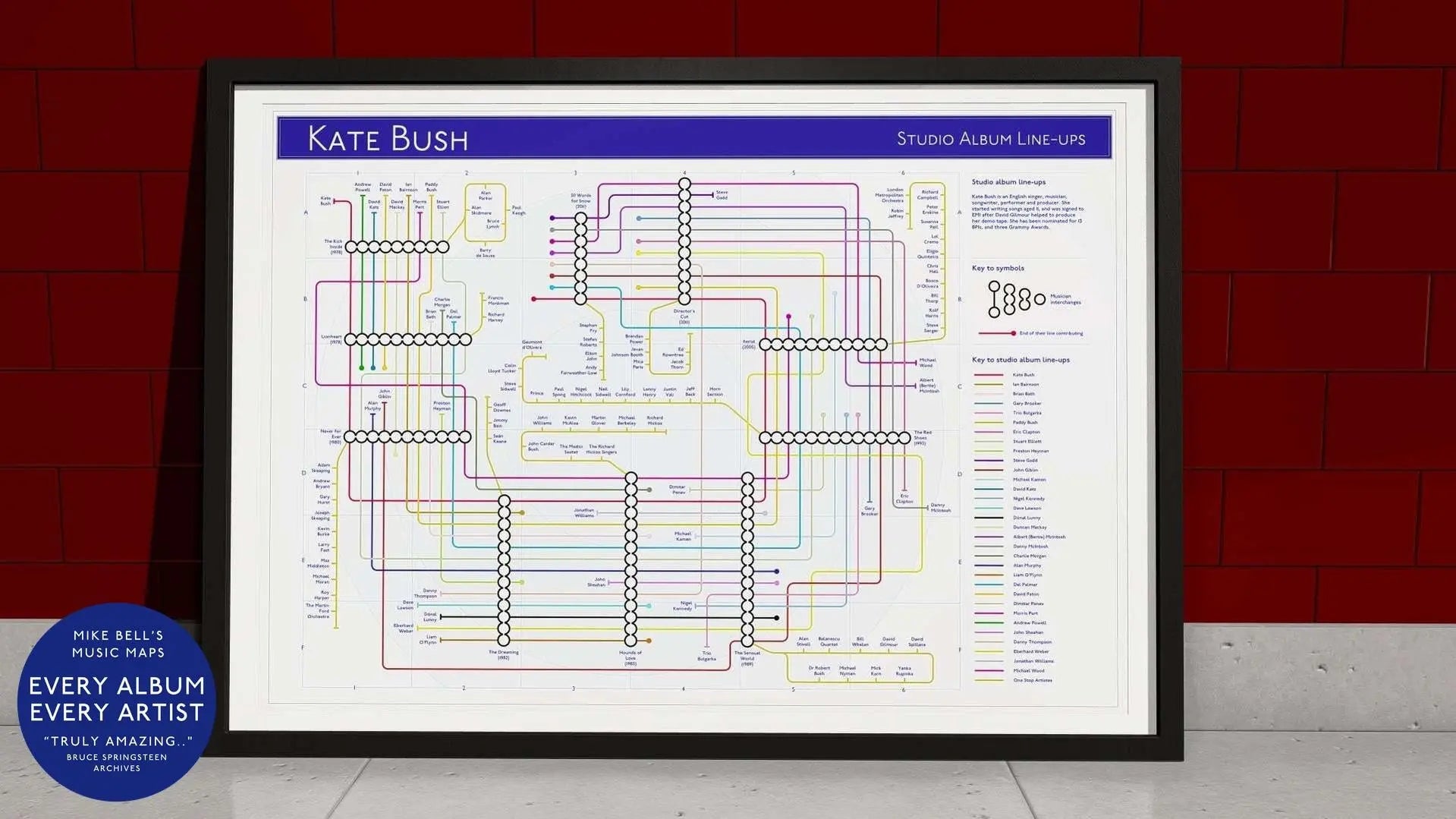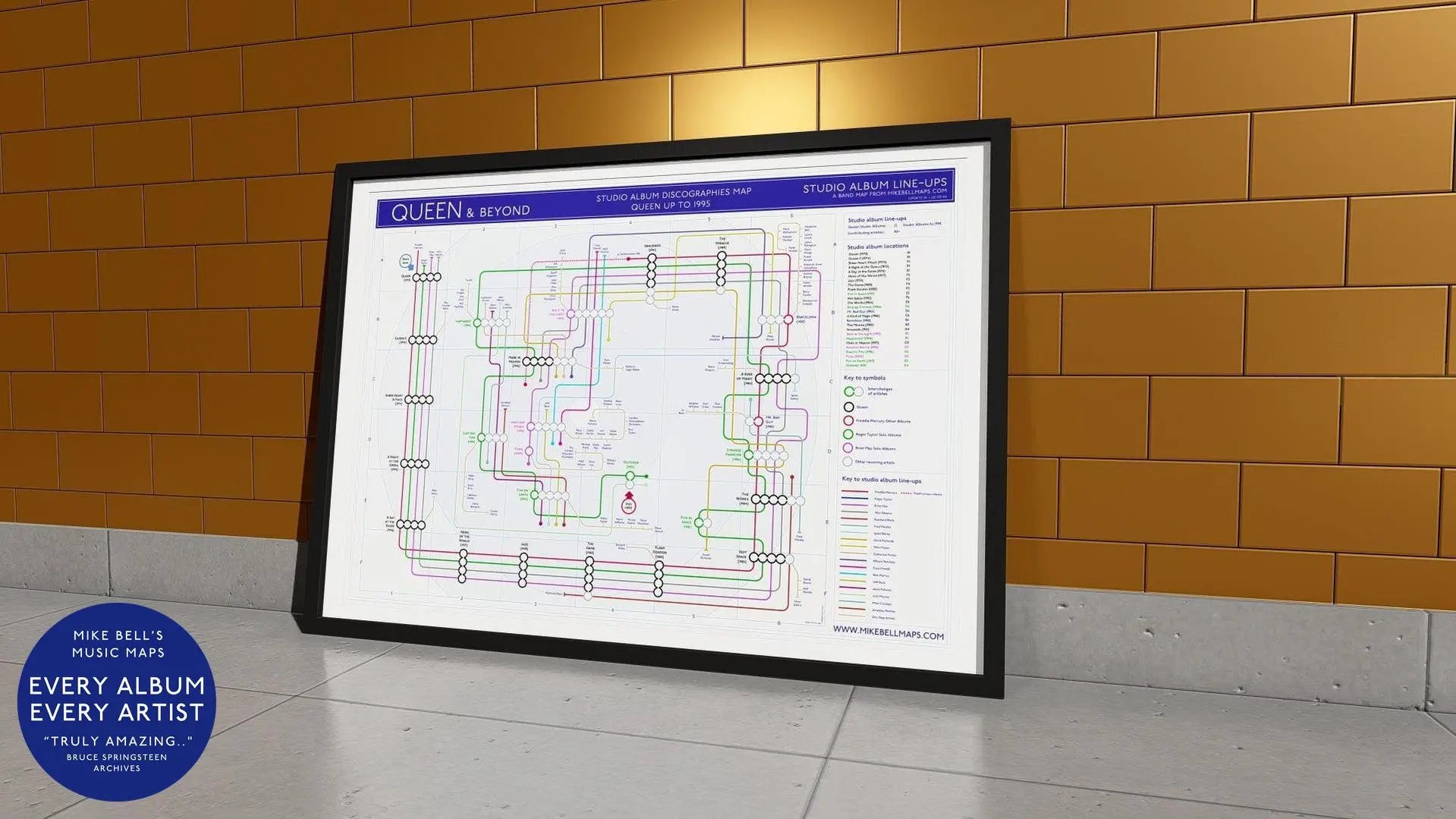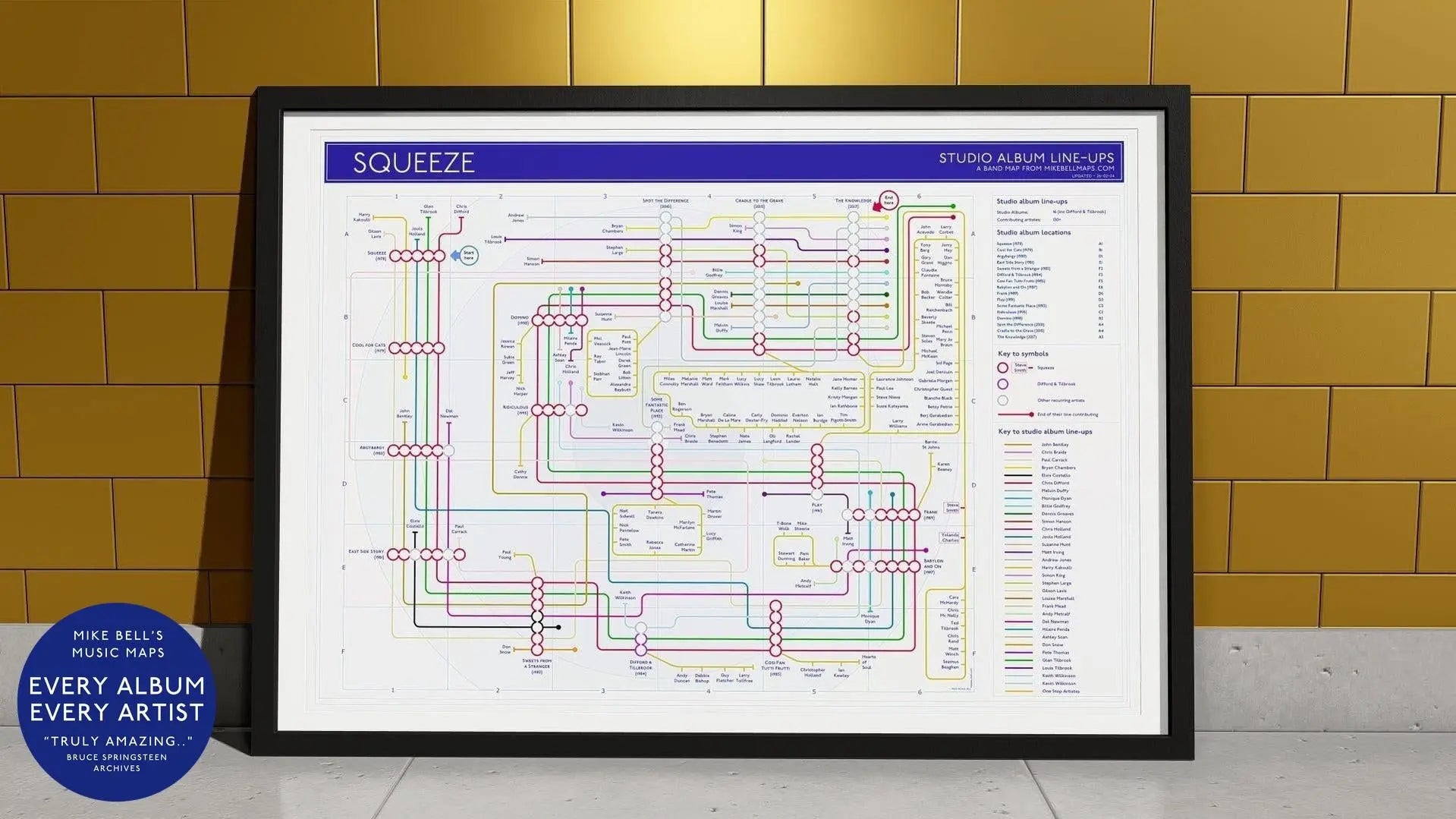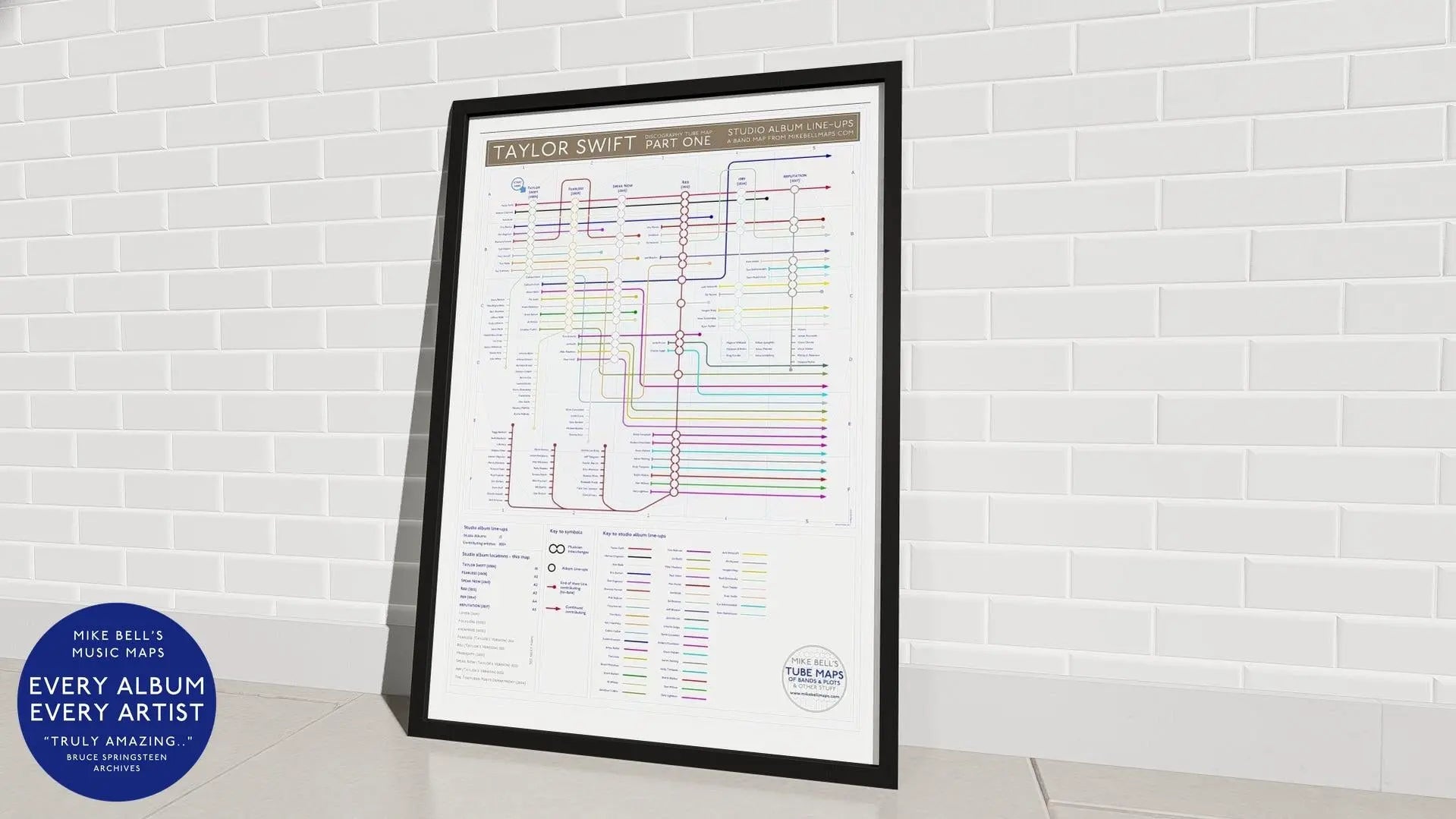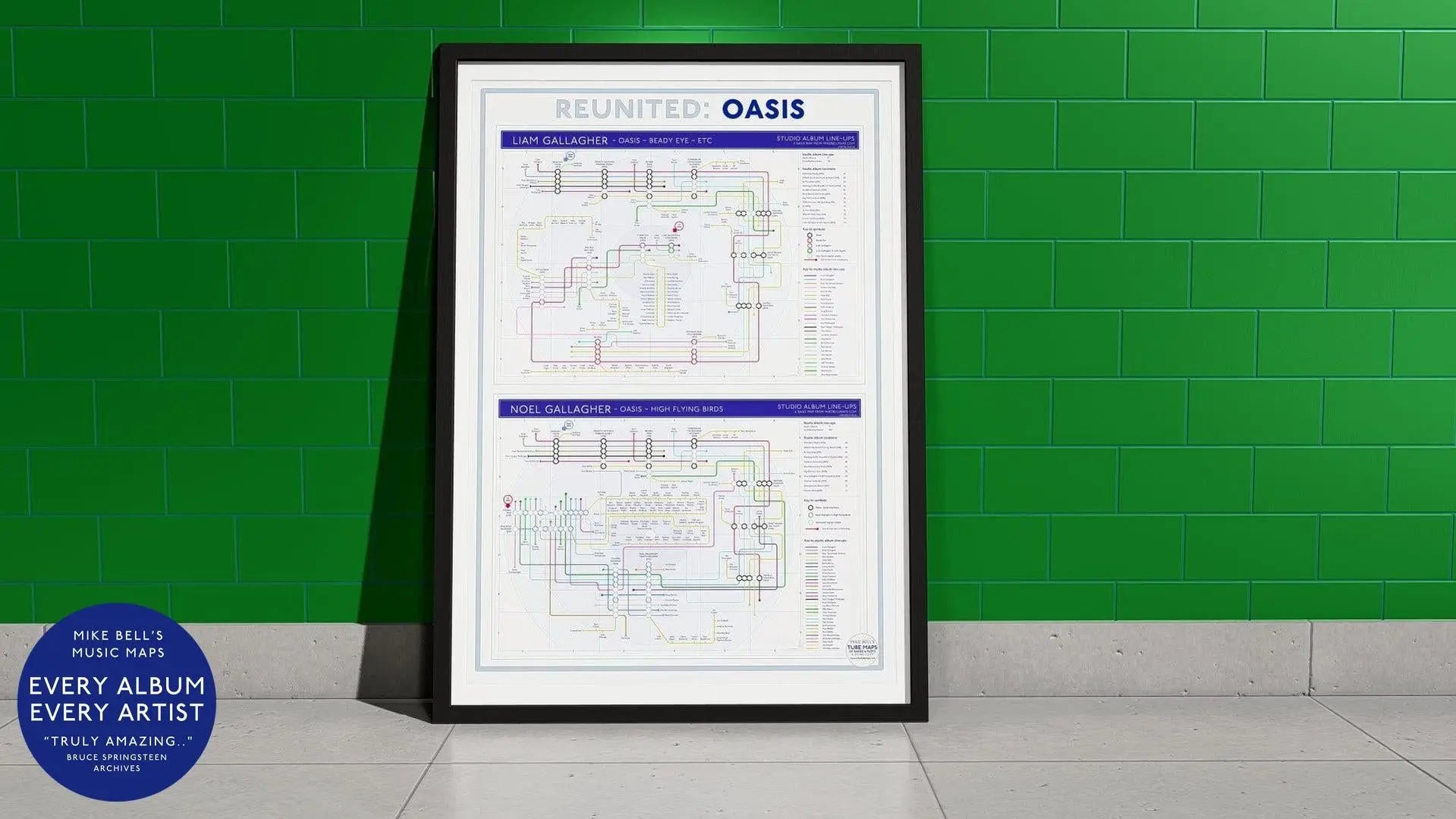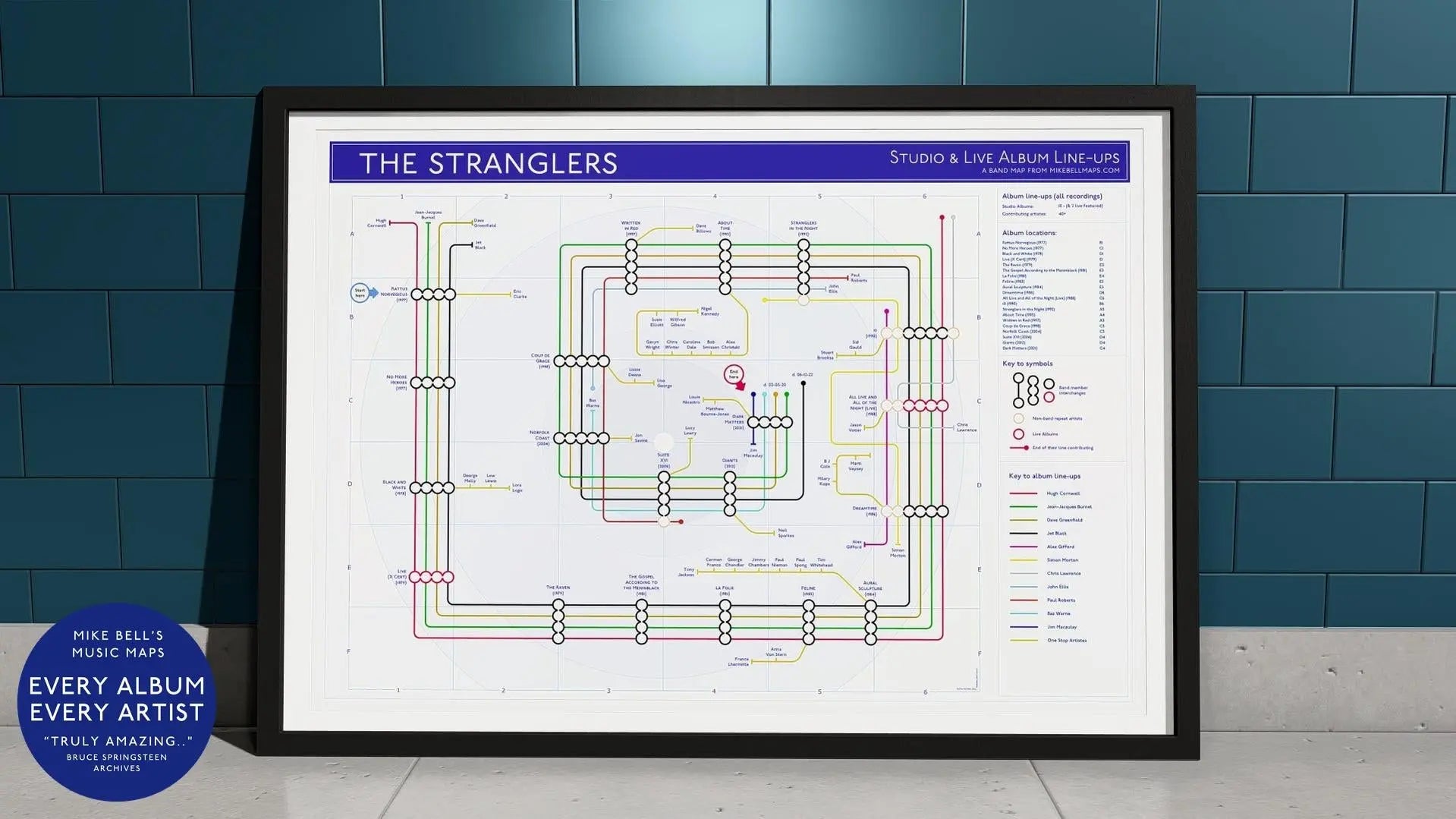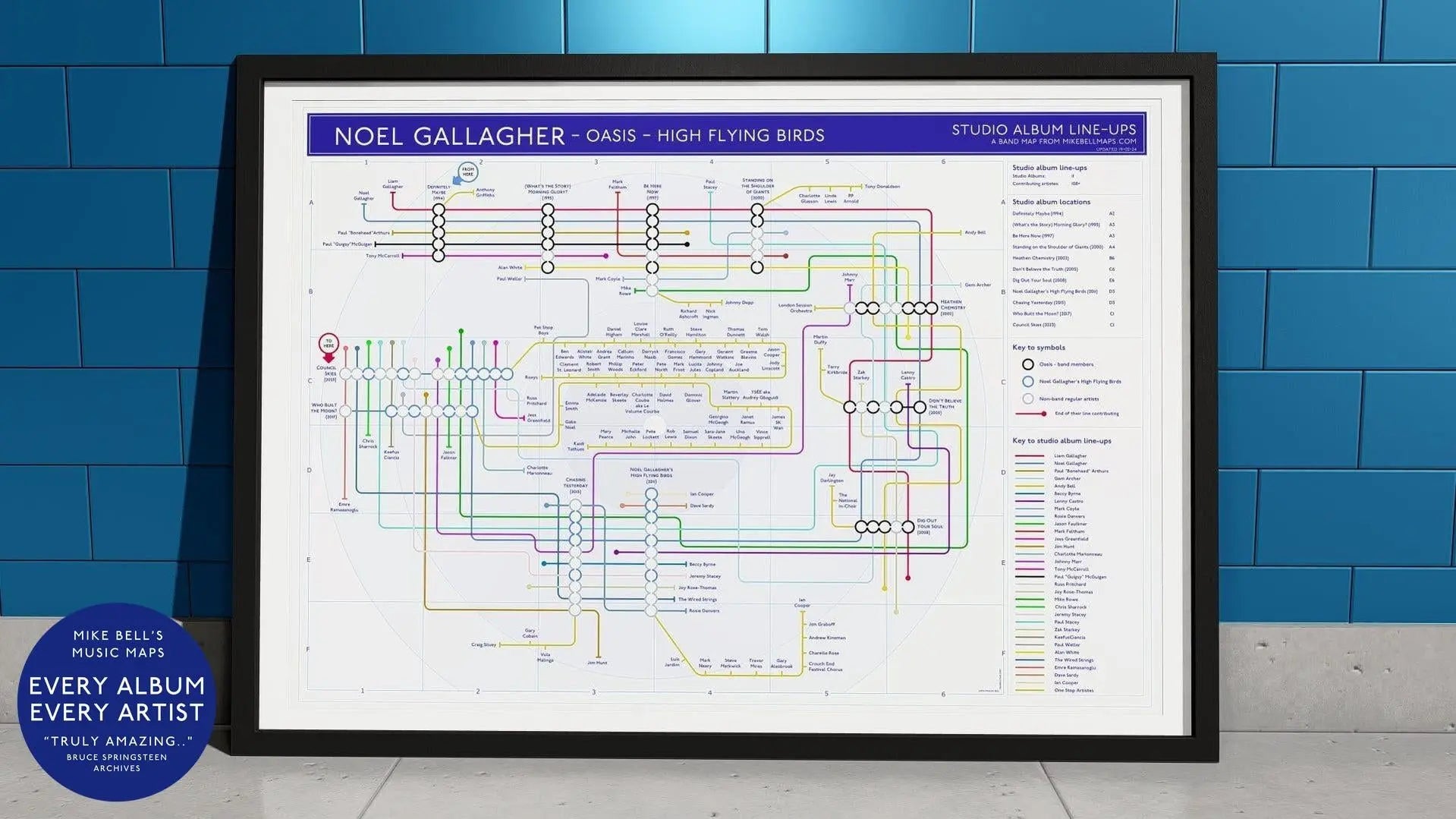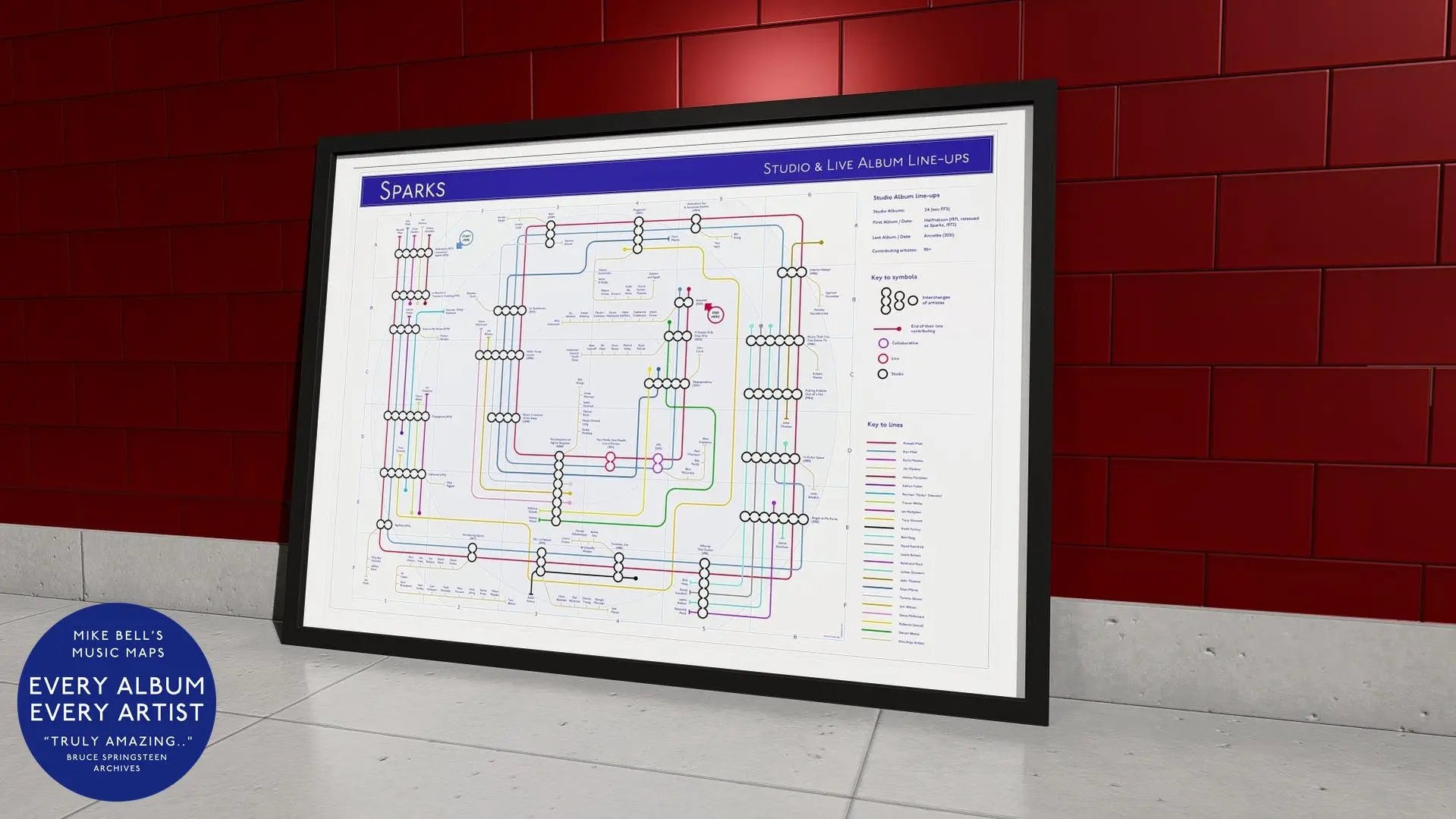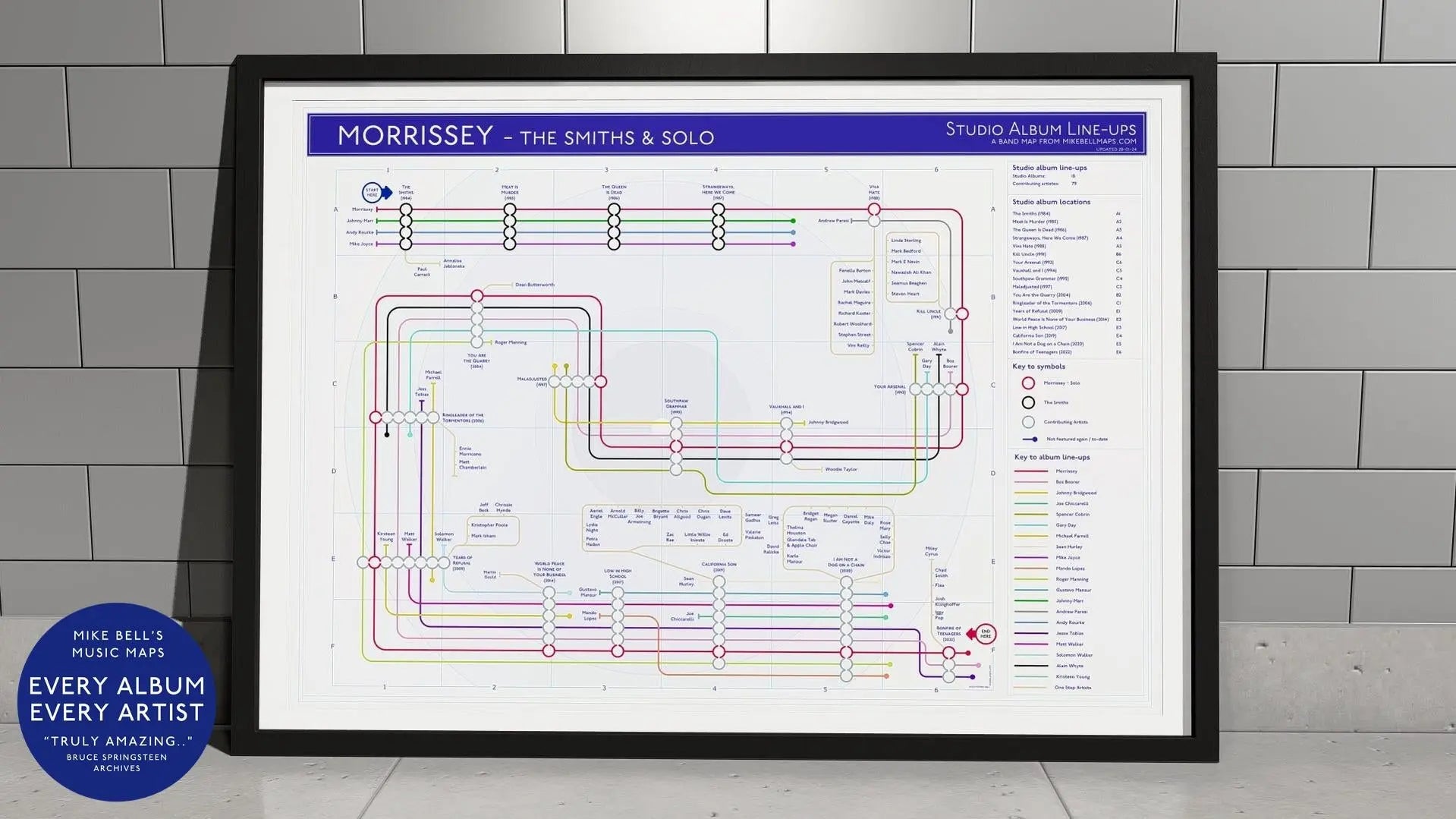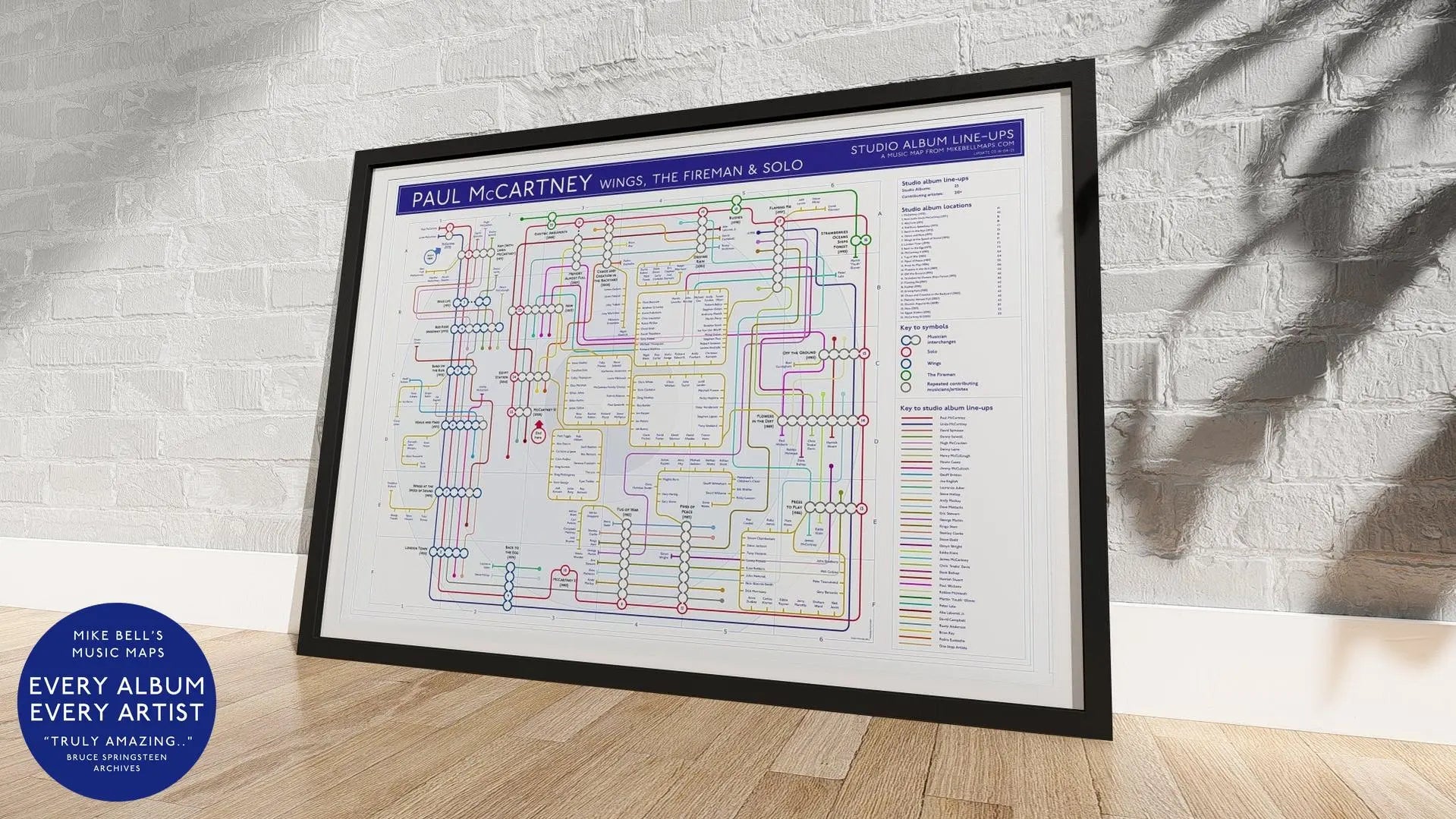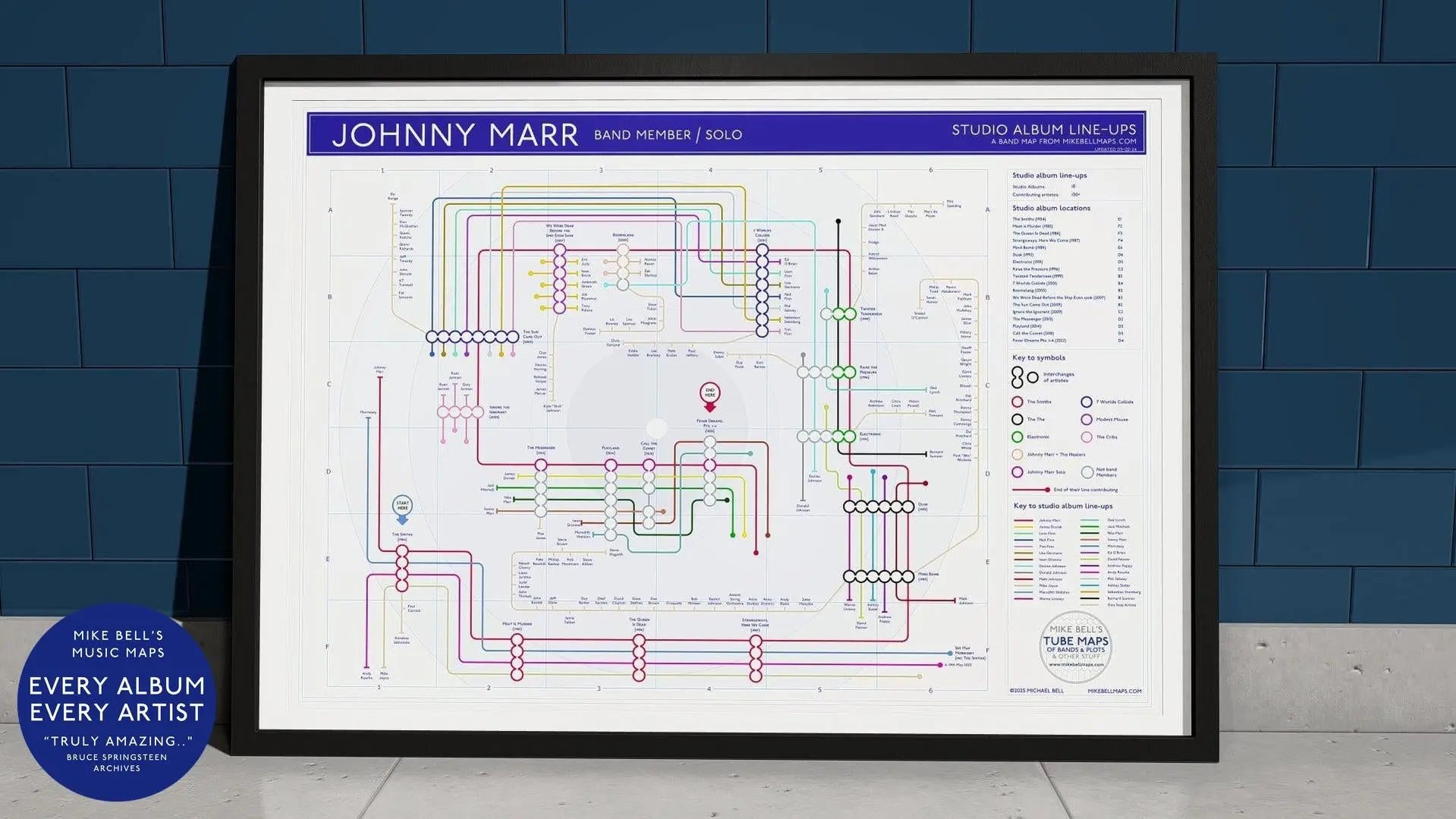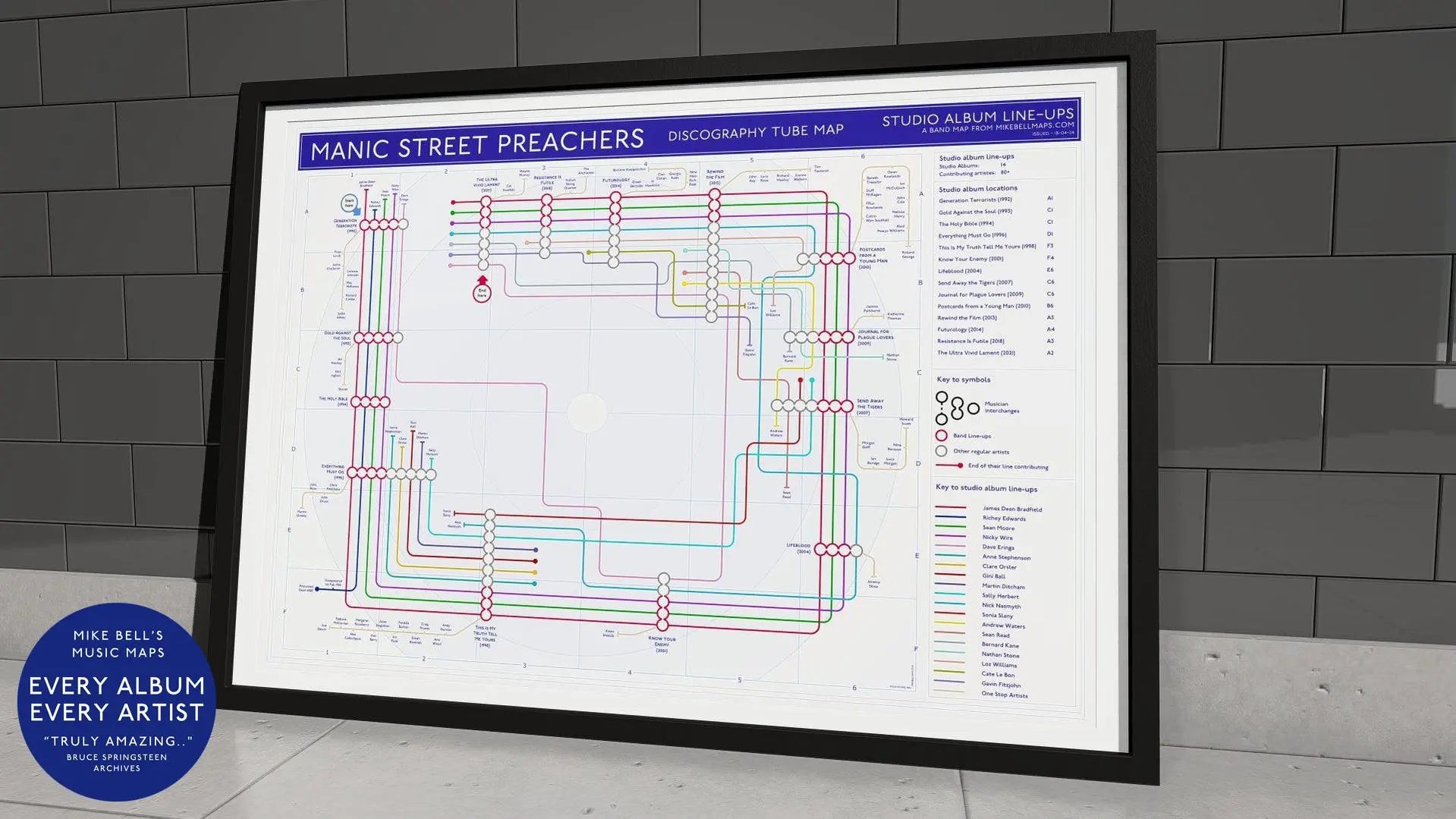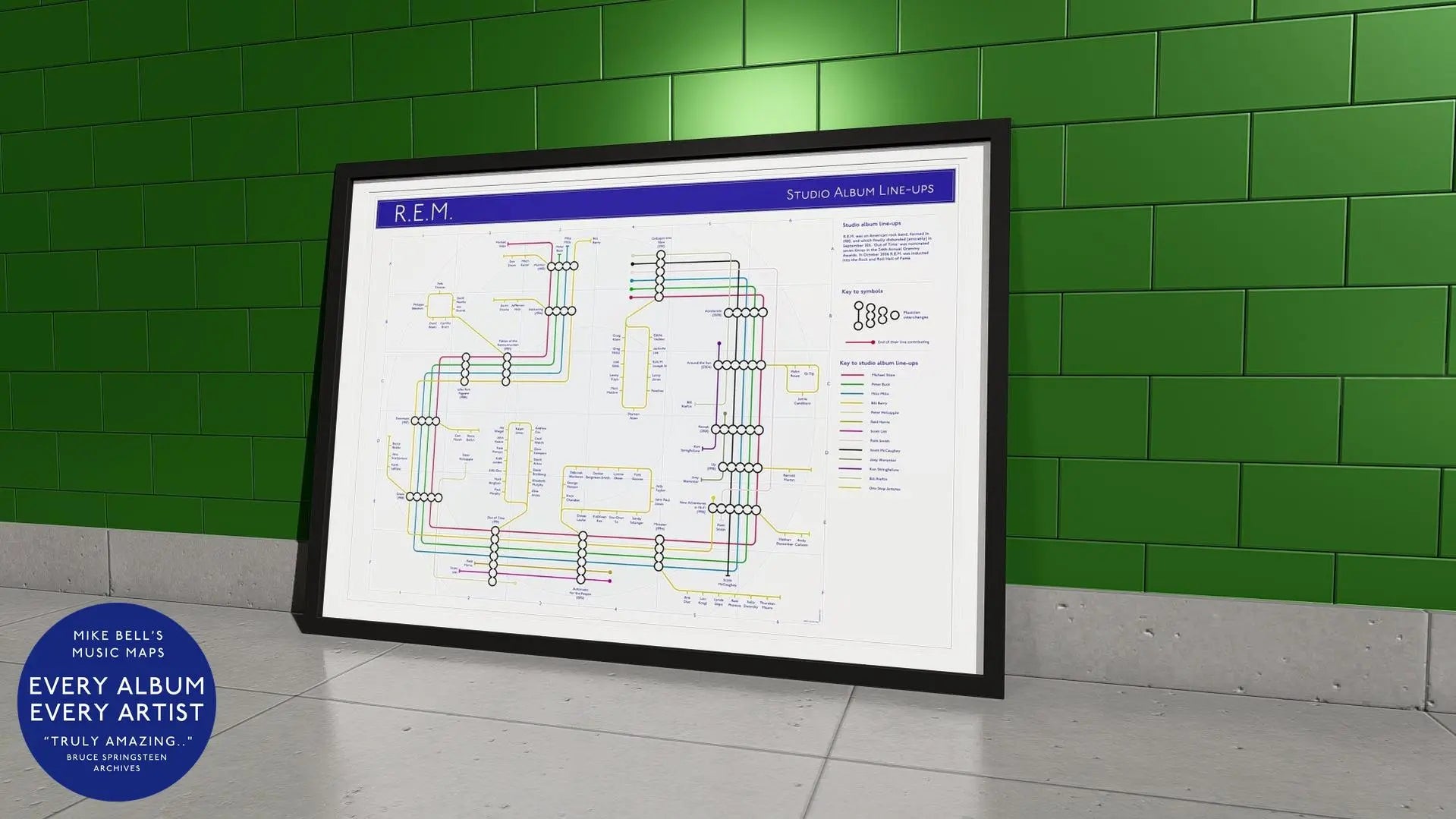
I Analysed Every Jethro Tull Album - Now An Art Print for Fans
by Mike Bell
·
When I designed the Jethro Tull Albums Music Map Art Print, I didn’t just trace a discography - I mapped a living organism that constantly reshaped itself over more than fifty years. Every station on the map represents not only an album but the precise constellation of musicians who made it.

My data comes from a unique, expanding dataset of album credits and studio line-ups that I’ve compiled from various sources. Jethro Tull’s story is one of relentless reinvention: a folk-rock band that became a prog-rock institution, then something stranger still — driven by the flute, wit, and vision of Ian Anderson. The musician data tells that story in a way liner notes never quite can.
The Early Years: From Blues Roots to Progressive Ambition (1968–1971)
The dataset begins with This Was (1968), the band’s debut, featuring Ian Anderson, Mick Abrahams, Glenn Cornick, and Clive Bunker. It’s a blues record with flashes of eccentricity - a premonition of what was coming. By Stand Up (1969) and Benefit (1970), Abrahams was gone, and Martin Barre joined on guitar - the single most significant line-up change in their history.
Anderson’s growing control over arrangements and lyrical themes is measurable even in the data: more instrumental credits under his name, more flute, more production. Then came Aqualung (1971), the album that fixed Tull’s reputation as both stadium band and critics’ puzzle. The spreadsheet shows a broader spread of instruments per musician, a surge of creative multitasking that mirrored Anderson’s obsession with texture and tone.
Peak Complexity: The Prog Years (1972–1979)
Between Thick as a Brick (1972) and Stormwatch (1979), Jethro Tull reached their most intricate configuration. Albums like A Passion Play and Minstrel in the Gallery added John Evan (keyboards), Jeffrey Hammond-Hammond (bass), Barriemore Barlow (drums), and arranger Dee Palmer, whose orchestral scoring shaped Tull’s progressive peak.
By Songs from the Wood (1977) and Heavy Horses (1978), my dataset shows the densest concentration of contributors - the band at full folk-prog bloom. Guest violinist Darryl Way and folk singer Maddy Prior appear, while Anderson’s role sprawls across acoustic guitar, flute, mandolin, and production. The records from this era read almost like ensemble theatre: every musician a character in Anderson’s pastoral drama.
Technology, Turbulence, and Reinvention (1980–1991)
The 1980s data tells a story of shifting technology and personnel. A (1980) introduces Eddie Jobson on keyboards and electric violin, signalling a more electronic approach. By Under Wraps (1984), Anderson is credited with Fairlight CMI programming - an early digital sampler that changed the band’s sound completely.
Later albums Crest of a Knave (1987) and Catfish Rising (1991) mark another phase of stability with Doane Perry (drums) and Dave Pegg (bass). The data shows fewer orchestral collaborators, more emphasis on core rock instrumentation, and a leaner, more guitar-driven sound - a move that won them the infamous 1989 Grammy for Best Hard Rock/Metal Performance.
Modern Tull: Legacy, Line-up, and Longevity (1995–2022)
The post-1990s credits became remarkably global. Albums like Roots to Branches (1995) and J-Tull Dot Com (1999) feature musicians such as Andrew Giddings on keyboards and Jonathan Noyce on bass, reflecting Anderson’s fusion of folk, jazz, and world textures. After a lengthy recording hiatus,
The Zealot Gene (2022) reintroduces the Tull identity with players like David Goodier, John O’Hara, and Scott Hammond - many drawn from Anderson’s solo tours. The continuity is visible in the data itself: fewer session guests, tighter instrumentation, and a return to the narrative concept.
What the Data Reveals
Across twenty-two studio albums, the Jethro Tull dataset identifies over forty credited musicians. Patterns emerge:
- Ian Anderson appears on every album, often credited with over five instruments.
- Martin Barre’s tenure spans from Stand Up (1969) to J-Tull Dot Com (1999), the band’s longest and most defining stretch.
- Periods of experimentation correlate directly with larger supporting ensembles - particularly the 1970s orchestral phase.
Each album acts as a node in a network of creative exchange, and mapping those connections reveals a musical DNA more complex than that of most rock bands of their era.
Mapping the Legacy
The Jethro Tull Music Map visualises this evolution in one continuous line. Every album, every musician, every era - drawn with the precision of a tube map, designed to make the band’s history instantly visible.

My map is both research and art: a way to see fifty years of music condensed into colour, shape, and chronology. It shows how Tull’s sound, from blues to folk to progressive rock, was built by dozens of hands, yet always steered by one unmistakable voice.
About the Research
All musician data in this post comes from my original Jethro Tull research spreadsheet, part of an expanding dataset covering thousands of session and studio credits across multiple artists.
Each entry is cross-checked against album sleeve notes, verified discographies, and reputable sources - eg AllMusic and fan-contributions. This combination of design precision and data accuracy underpins all my music maps, ensuring each piece is both visually striking and historically sound.








